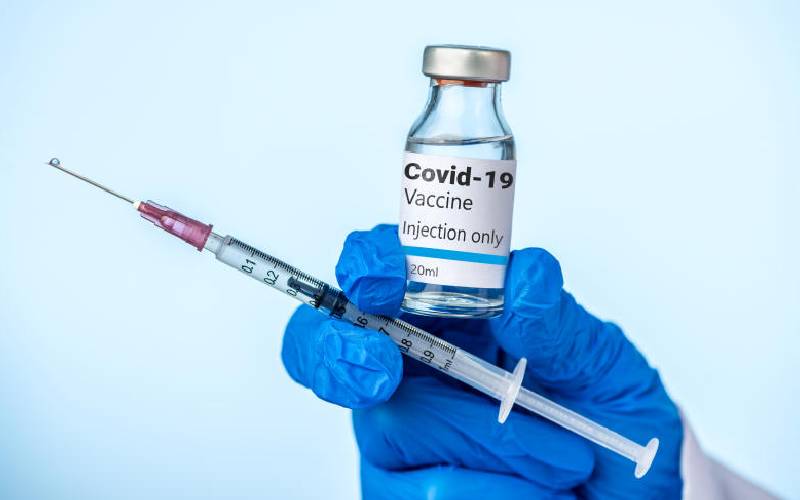
Kenya might be staring at the possibility of a third wave of Covid-19 as the last three weeks have shown a steady rise in the number of positive cases.
The number of patients in need of critical care has also increased.
The country on March 4 reported 528 new cases of Covid-19 from a sample size of 6,291, a testing positivity rate of 8.4 per cent.
The last time a triple-figure of new cases was reported was at the height of the second wave in November and December.
Experts are blaming the rise in new cases on reopening of schools, which has seen students from different socio-economic backgrounds mixing.
Another possible cause of the rise in new cases could be a new variant of Covid-19, according to Kenya Medical Research Institute (Kemri), which estimates a spike in new cases at the end of this month.
Data independently analysed by The Standard since February 9 also reveals that the number of patients in need of critical care has doubled.
The number of deaths has also increased: From a single digit of nine deaths in the week between February 9 and February 14, to 32 in the week that followed. But between February 9 and 14, the country did not report fatalities for three days.
However, in the last 15 days, Kenya lost 68 people to the pandemic. At least 10 fatalities were reported on February 23.
Between February 9 and February 14, the number of patients in the Intensive Care Unit (ICU) was 30 – the highest in a week being 34 recorded between February 10 and 15.

Supplemental oxygen
However in the last two weeks, the number of patients in the ICU has been averaging about 60 daily; with highs of 61 on February 26 and 25. Similarly, on average, half of the patients admitted to the ICU during this period were in need of oxygen.
For example, on March 2, where there were 58 patients in the ICU, 29 of them were on oxygen. On March 4, the number of patients in the ICU was 65 with 34 on supplemental oxygen.
On February 26 when the country reported 61 patients in the ICU, 27 were on supplemental oxygen.

This scenario means as the number of cases increase, the number of patients in need of critical care will rise and so will be those in need of oxygen. This was the same case during the previous peaks in July and October/November 2020, which led to more deaths.
The number of cases is as well on the rise, with the only double digit number of cases being recorded on February 14. The rest of the days, since February 9, have been triple digits with a high of 410 on February 26 from a sample of 7,180.
While this third peak has not been officially confirmed, Kemri had forecast it to be around March.
Kemri, in the findings published January 2021, noted that reopening of schools on January 4 would lead to increased transmission of the virus by increasing the time within which one case would infect other people by 25 per cent.
This, the study said, is due to the mixing of social clusters that were not in contact while schools were closed.
“Under the most plausible scenario, we project that the rate of Covid-19 cases and deaths incidence will peak in mid-March 2021,” reads the Kemri document on projections of Covid-19 cases and deaths following schools reopening.
The document postulates a worst case scenario of a 50 per cent increase in new infections (to the period it takes one case to infect others) where Kenya will face a similar wrath of the disease as witnessed in the second wave.
“The impact of other events such as new variants could increase the number of people infected by one person within a certain period of time by more than 25 per cent, and case numbers and deaths would then exceed our predictions,” it says.
The new variant B.1.351/501Y.V2 was detected in the country in December last year from two tourists who have since left the country. They were asymptomatic by then and the Ministry of Health, while heightening surveillance, has not announced any local transmission of this variant.
Hospitals are already on high alert following reported increase in the number of patients who have Covid-19.
One such facility is The Nairobi West Hospital, according to a notice dated February 26.
“Both private and public hospitals are experiencing rising number of confirmed Covid-19 admissions with worrisome number of severe cases,” reads a notice from The Nairobi West Hospital drafted by the chief medical officer Andrew Gachii. “We have seen other countries in Europe, parts of Asia and the US experience third waves and now in our own country with the anticipated peak in the next four-six weeks.”
He added: “Currently, the virus is unpredictable as there are many variants and there is much to be learnt but what is known is that the third wave and the issue of herd immunity are intertwined with the behaviour of the virus.”
Gachii noted that until millions of citizens are vaccinated that herd immunity will be attained, a process that might take a year.
A situational analysis report of the pandemic in the country dated March 1 shows the first week of November had 9,399 new cases reported. For fatalities, the second peak was on the second week of November 2020 with 116 deaths reported.
There were 95 deaths during the first peak of the disease which was recorded on the fourth week of July. The peak was also reported during the same week with 513 new cases.
But while the cases in the country have been on the rise, the World Health Organisation (WHO), in its epidemiological update on February 17, states that the number of coronavirus deaths declined in all regions by 10 per cent as 81,000 fatalities were reported the previous week.
Positivity rate
“Only infections in the Eastern Mediterranean region increased by seven per cent,” read the update.
The WHO stipulates that for a country to declare the pandemic under control, the positivity rate has to be below five per cent for two straight weeks.
However, for the last two weeks, the country has not been in a position to hold this positivity rate below five per cent as it fluctuated to 9.9 per cent on February 28 as the highest in the period. The average testing positivity rate in the country during the period was 5.6 per cent.
Over 117 million cases of coronavirus have been reported in the world since the outbreak in Wuhan, China, in December 2019. At least 2,601,552 people have so far died from the disease.
The US remains the most affected country with 29,653,891 cases and 537,119 deaths. President Joe Biden said yesterday the country will have enough coronavirus vaccines for every adult by the end of May.
 The Standard Group Plc is a multi-media organization with investments in media platforms spanning newspaper print
operations, television, radio broadcasting, digital and online services. The Standard Group is recognized as a
leading multi-media house in Kenya with a key influence in matters of national and international interest.
The Standard Group Plc is a multi-media organization with investments in media platforms spanning newspaper print
operations, television, radio broadcasting, digital and online services. The Standard Group is recognized as a
leading multi-media house in Kenya with a key influence in matters of national and international interest.











